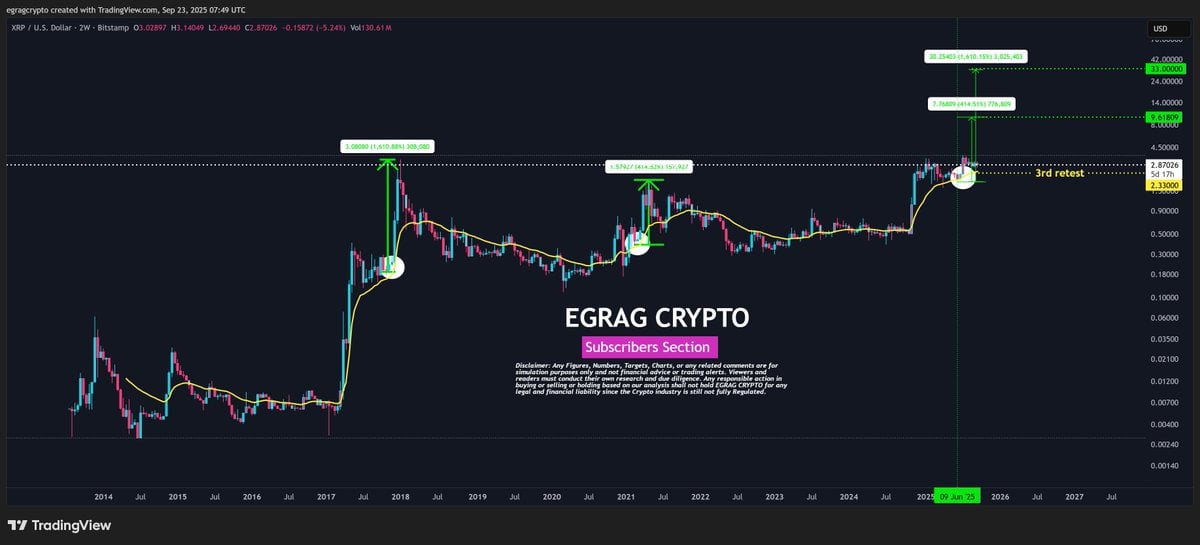TLDR
- Trump admits 100% tariffs on Chinese goods cannot last long.
- Crypto market plunges as trade tensions rise between U.S. and China.
- Trump plans to meet Xi in South Korea to ease tariff disputes.
- WTO warns U.S.-China rift could cut global growth by 7%.
A week of financial turbulence deepened on Friday as U.S. President Donald Trump admitted that his proposed 100% tariffs on Chinese goods were “not sustainable.” His remarks came as global markets, including major cryptocurrencies, saw steep declines amid uncertainty over U.S.-China trade relations and new export restrictions. Trump said he still plans to meet Chinese President Xi Jinping in South Korea to discuss easing tensions.
Trump Acknowledges Tariff Strain but Blames Beijing
President Trump said the 100% tariff plan on Chinese imports would not be sustainable in the long run, yet insisted that Beijing’s trade practices left him with “no choice.” Speaking on Fox Business Network, Trump said, “They forced me to do that,” referencing China’s recent move to tighten export controls on rare earth materials vital to technology manufacturing.
The tariff announcement came a week after Washington reinstated steep import levies and imposed new export restrictions on what Trump described as “critical software.” The measures are set to take effect by November 1, nine days before existing tariff relief expires. Trump maintained that the U.S. seeks fairness in trade, saying, “We have to have a fair deal. It’s got to be fair.”
Markets React as Talks Continue
The sharp escalation in tariffs triggered a selloff across global markets. Early losses in U.S. stocks were eased only after Trump confirmed his upcoming meeting with Xi. The reassurance helped stabilize Wall Street, though traders remained cautious. Major U.S. indexes recovered slightly in afternoon trading following a week of volatility tied to tariff concerns and pressure on regional banks.
Meanwhile, the cryptocurrency market experienced a widespread downturn. Bitcoin, Ethereum, and other major tokens dropped sharply as investors turned away from riskier assets. Analysts linked the decline to global uncertainty and the renewed trade confrontation between Washington and Beijing.
U.S. and China Officials Hold Preliminary Talks
U.S. Treasury Secretary Scott Bessent spoke with Chinese Vice Premier He Lifeng on Friday evening in what Bessent called “frank and detailed discussions.” The two agreed to meet in person next week to continue negotiations. Bessent also reiterated concerns about China’s “state-driven” economic model, saying it has created overcapacity and distorted global markets.
China’s Commerce Ministry responded by accusing Washington of “undermining the rules-based multilateral trading system.” The ministry urged the U.S. to remove measures that it said breach World Trade Organization standards and to align its policies with global trade rules. Relations between the two sides have remained tense since early October, when China expanded restrictions on rare earth exports.
Global Trade Leaders Urge De-escalation
World Trade Organization Director-General Ngozi Okonjo-Iweala called on both nations to ease their trade confrontation. She warned that a long-term decoupling between the world’s two largest economies could cut global output by up to 7%. The WTO, she said, was engaging both governments to promote open dialogue.
Despite the tensions, Trump struck a softer tone later in the day. Ahead of a White House meeting with Ukrainian President Volodymyr Zelenskiy, he told reporters, “China wants to talk, and we like talking to China.” The planned meeting between Trump and Xi in South Korea is expected to set the tone for the next phase of negotiations.





